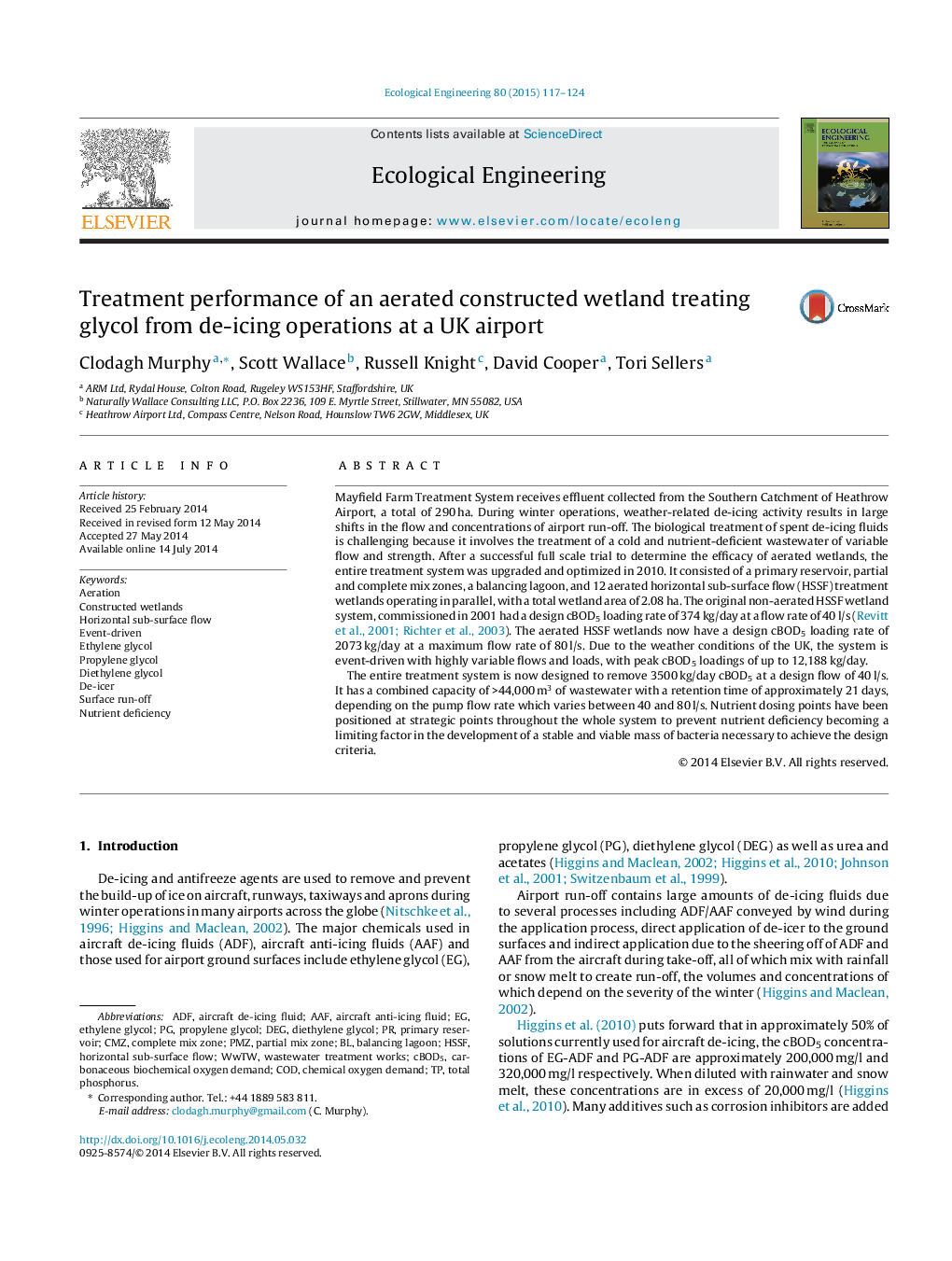| Article ID | Journal | Published Year | Pages | File Type |
|---|---|---|---|---|
| 4389037 | Ecological Engineering | 2015 | 8 Pages |
•Review of literature regarding using wetlands to treat glycol based de-icers from airports.•Description of the wetland treatment system at Heathrow Airport which was converted from primarily anaerobic treatment to aerated treatment.•Increasing the BOD treatment capacity of the HSSF wetlands without increasing the wetland area: the benefits of aerated wetlands and associated performance results presented.•Results for the first 2 years of ‘aerated’ operation presented and inherent issues related with event-driven treatment systems and nutrient/biomass management discussed.
Mayfield Farm Treatment System receives effluent collected from the Southern Catchment of Heathrow Airport, a total of 290 ha. During winter operations, weather-related de-icing activity results in large shifts in the flow and concentrations of airport run-off. The biological treatment of spent de-icing fluids is challenging because it involves the treatment of a cold and nutrient-deficient wastewater of variable flow and strength. After a successful full scale trial to determine the efficacy of aerated wetlands, the entire treatment system was upgraded and optimized in 2010. It consisted of a primary reservoir, partial and complete mix zones, a balancing lagoon, and 12 aerated horizontal sub-surface flow (HSSF) treatment wetlands operating in parallel, with a total wetland area of 2.08 ha. The original non-aerated HSSF wetland system, commissioned in 2001 had a design cBOD5 loading rate of 374 kg/day at a flow rate of 40 l/s (Revitt et al., 2001 and Richter et al., 2003). The aerated HSSF wetlands now have a design cBOD5 loading rate of 2073 kg/day at a maximum flow rate of 80 l/s. Due to the weather conditions of the UK, the system is event-driven with highly variable flows and loads, with peak cBOD5 loadings of up to 12,188 kg/day.The entire treatment system is now designed to remove 3500 kg/day cBOD5 at a design flow of 40 l/s. It has a combined capacity of >44,000 m3 of wastewater with a retention time of approximately 21 days, depending on the pump flow rate which varies between 40 and 80 l/s. Nutrient dosing points have been positioned at strategic points throughout the whole system to prevent nutrient deficiency becoming a limiting factor in the development of a stable and viable mass of bacteria necessary to achieve the design criteria.
